The Gothic architectural style developed from the Romanesque style in the 12th century in France and England.
It became the de facto architectural style in Europe in the High and Late Middle Ages until it was replaced by the Renaissance style in the 15th and 16th centuries.
In this post, we’ll take a closer look at some of the most famous Gothic Cathedrals, amazing churches that display the ultimate beauty of the remarkable Gothic architecture.
Related: Check out some of these Gothic Revival buildings.
1. Chartres Cathedral
The Cathedral of Chartres is also referred to as the “Cathedral of Our Lady of Chartres” and most of it was built between 1194 and 1220.
It’s assumed that the site has been home to 5 different churches since the 4th century and the Gothic church is considered to be one of the ultimate masterpieces of French Gothic art.

2. Cologne Cathedral
Cologne Cathedral is one of the most famous churches in the world. The construction of this stunning building in Cologne took hundreds of years to complete between the 13th and 19th centuries.
Starting in 1240, the medieval architectural plan was finally completed in the year 1880. The church features the largest façade of any church in the world and is described as “a masterpiece of exceptional intrinsic value.”
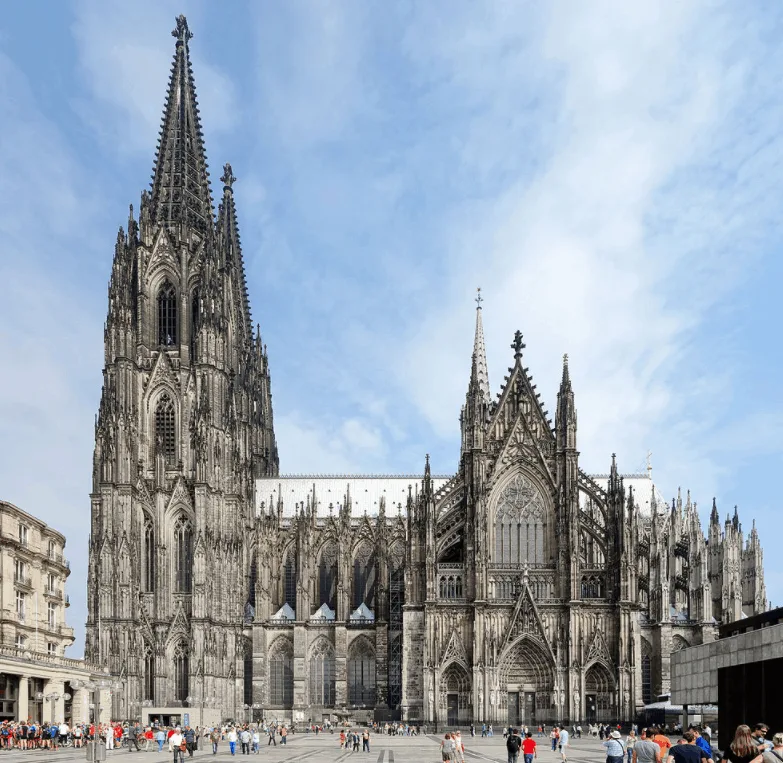
3. Seville Cathedral
Seville Cathedral was the largest cathedral in the world when it was completed in the 16th century in this city in southern Spain.

The Gothic section of the cathedral has a length of 126 meters (413 feet), a width of 76 meters (249 feet), and a height of 42 meters (138 feet), making it one of the most impressive cathedrals in Europe!
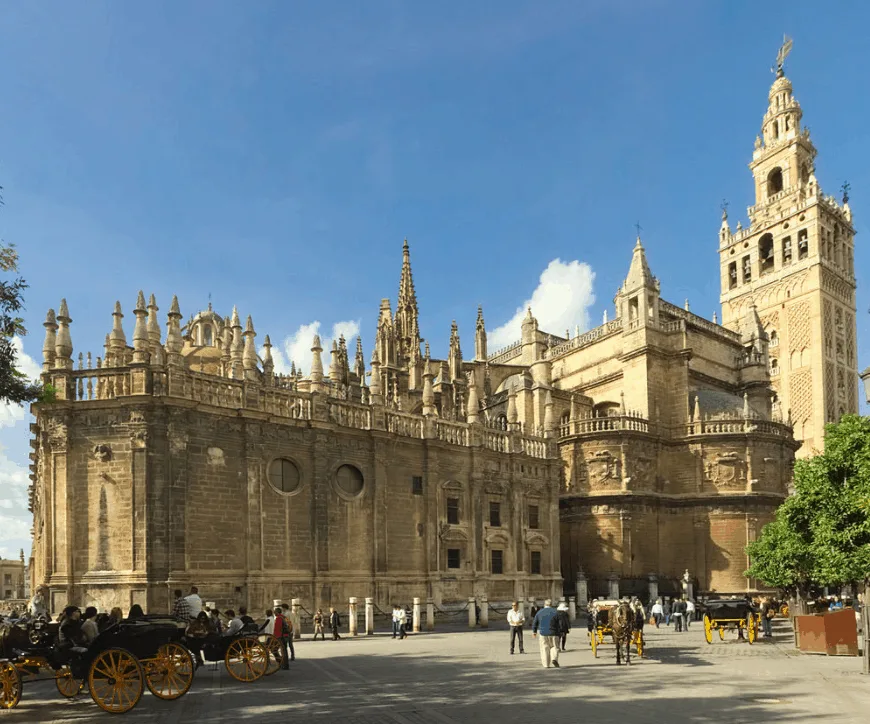
4. Milan Cathedral
Milan Cathedral is another magnificent Gothic church that took hundreds of years to complete. Construction started in the year 1386 but it wasn’t until the year 1965 that the final details were completed.
This amazing church in Milan is the second-largest church in Europe and the 4th largest church in the world!

5. Westminster Abbey
Westminster Abbey is one of the most important churches in England as it’s both the coronation and burial site of English and British monarchs.
Over 3,300 important people in British history have been buried in this church in London and the coronation of monarchs has been conducted here since William the Conqueror in the year 1066!

6. Strasbourg Cathedral
Strasbourg Cathedral was constructed between 1015 and 1439 and is considered to be the epitome of Rayonnant Gothic architecture, also referred to as simply “French Gothic architecture.”
It was the tallest building in the world for 227 years between 1647 and 1874 and is still the highest building in the world that was completely built in the Middle Ages!
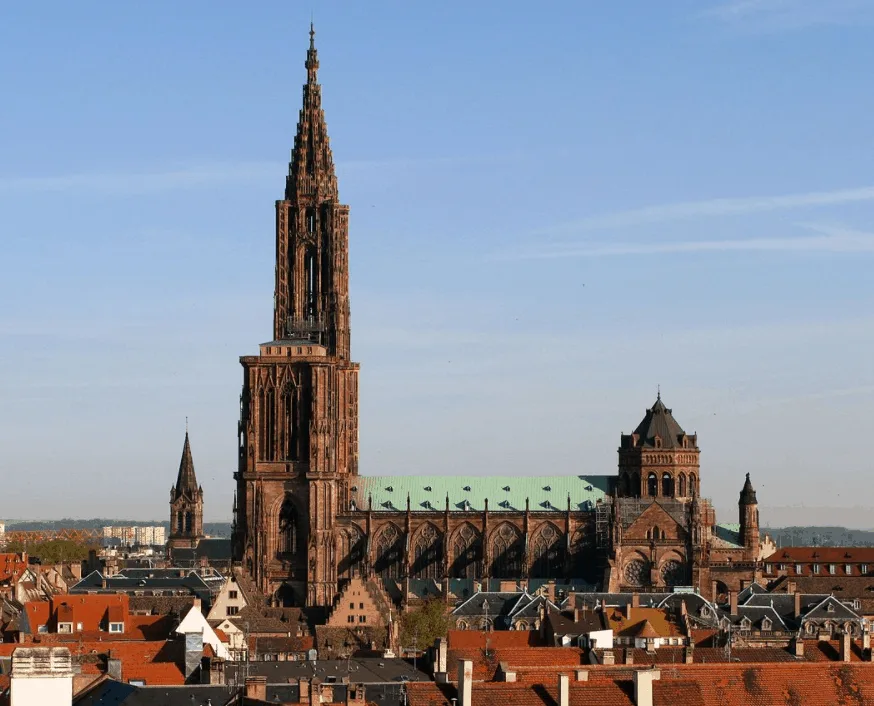
7. Lincoln Cathedral
Lincoln Cathedral, also referred to as the “Cathedral Church of the Blessed Virgin Mary of Lincoln,” was built together with Lincoln Castle between 1072 and 1311.
It’s one of the best examples of the Early Gothic Style and used to have a spire (which collapsed) that made it the tallest building in the world for 238 years between 1311 and 1548. It was the first building in the world to surpass the Great Pyramid of Giza!
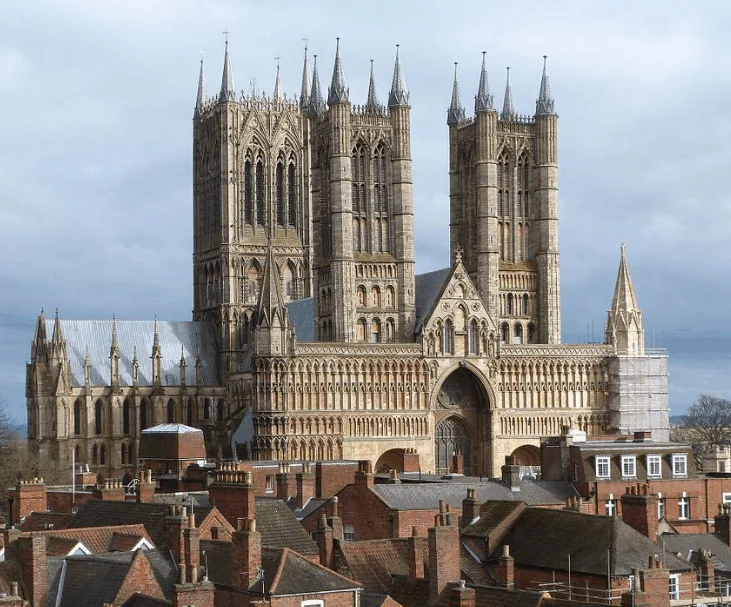
8. St. Stephen’s Cathedral
St. Stephen’s Cathedral, commonly known as “Stephansdom,” is the most important religious building in Vienna and was originally completed between 1137 and 1160.
The Gothic church we see today was built in the 14th century and was built on the ruins of the 12th-century church. It features a multi-colored tile roof which made it one of the best-recognized landmarks in the city.

9. Reims Cathedral
Reims Cathedral, officially known as the “Notre-Dame de Reims,” was dedicated to the Virgin Mary and was originally the coronation place of the Kings of France.
The original church on the location was founded in the 5th century and the current Gothic church was built between 1211 and 1345. It’s a prominent landmark in Reims and one of the most famous Gothic Cathedrals in France.

10. Canterbury Cathedral
Canterbury Cathedral is arguably the most famous Gothic Cathedral in England.
The original church was founded in the year 597 and the cathedral was completely rebuilt between 1070 and 1077. The Gothic elements we see today were constructed in the late 12th century.

11. York Minster
The Cathedral of York, commonly known as “York Minster,” is one of the largest cathedrals in Northern Europe.
It was devoted to Saint Peter and built between 1230 and 1472 and contains numerous Gothic architectural elements typical of the Perpendicular Gothic or “English Gothic style.”

12. Wells Cathedral
Wells Cathedral was built between 1176 and 1450 and replaced an earlier church that was founded on the site in the year 705.
It has one of the largest façades of any church in England and has been described as “unquestionably one of the most beautiful” and “most poetic” of English cathedrals.
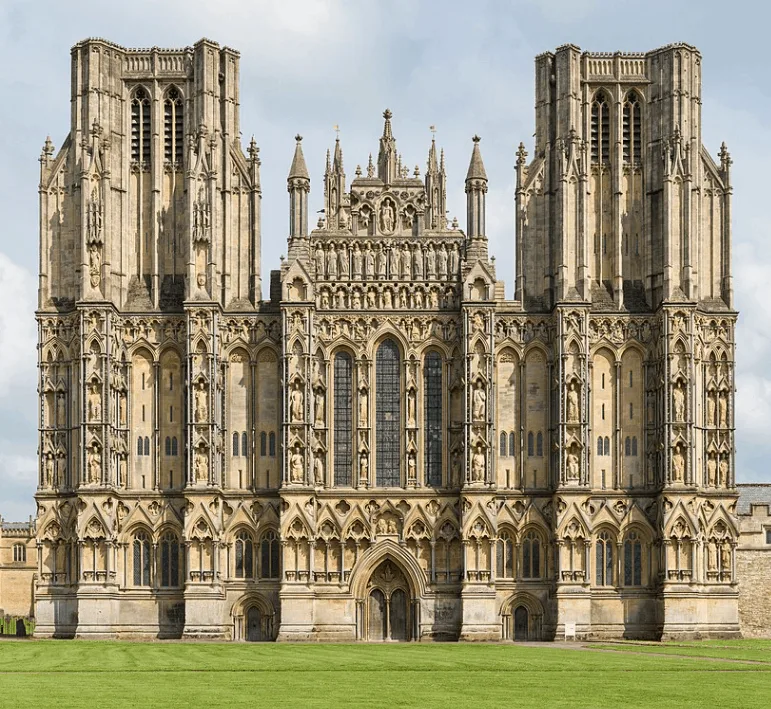
13. Santiago de Compostella Cathedral
The Cathedral of Santiago de Compostela was constructed on what used to be a shrine of Saint James the Great, one of the 12 apostles of Jesus Christ.
It’s the endpoint of the Way of St. James, a famous pilgrimage route in Europe that was established in the 9th century. It’s, together with the city’s old town, a UNESCO World Heritage Site and considered to be one of the 12 Treasures of Spain.
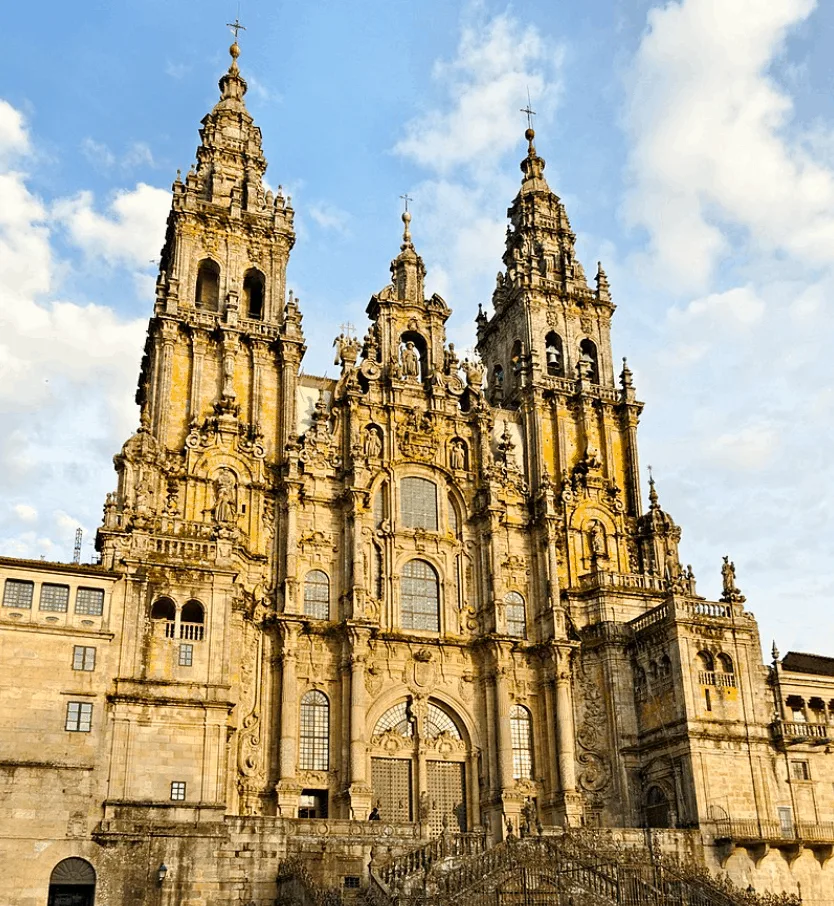
14. Ely Cathedral
Ely Cathedral was built on the ruins of an abbey church that was founded in the year 675 by an Anglo-Saxon princess.
The current church was built between 1083 and 1375 and most of the original Romanesque elements were rebuilt in the Gothic architectural style. The large octagonal tower dominates the area.
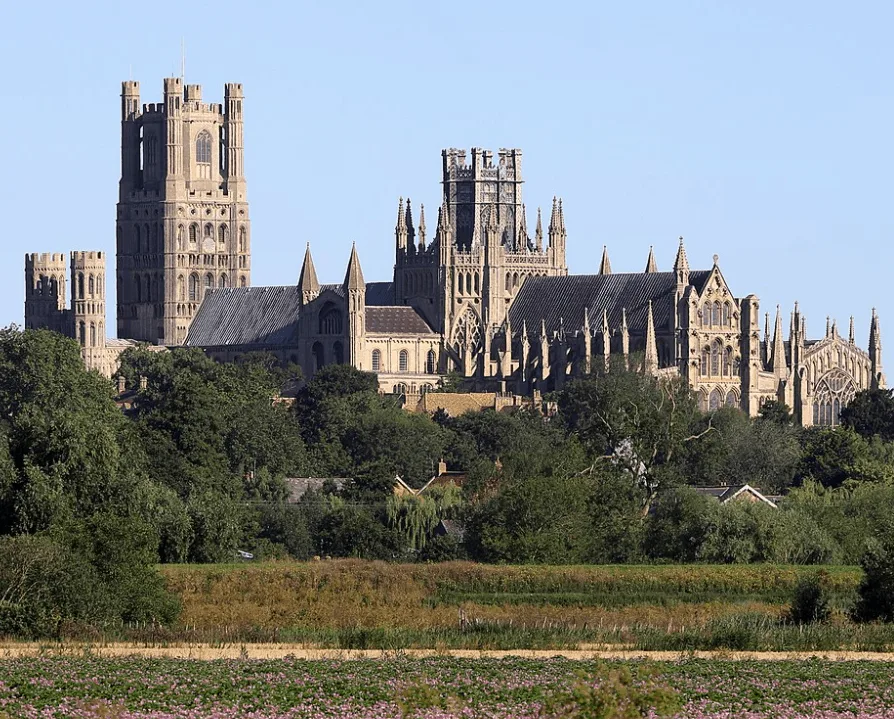
15. Florence Cathedral
Florence Cathedral is one of the most remarkable cathedrals in the world. It’s the structure that marks the end of the Gothic period as it transitions into the Renaissance.
It stands in the birthplace of the Renaissance and its most prominent feature is its magnificent dome designed by Filippo Brunelleschi.

16. Barcelona Cathedral
Barcelona Cathedral is the most important church in the city of Barcelona, even though the Sagrada Família is the most famous one. It serves as the seat of the Archbishop of Barcelona and the history of religious structures on the site dates back to the 4th century.
Its official name is Cathedral of the Holy Cross and Saint Eulalia as it was named after one of the patron saints of the city of Barcelona, Saint Eulalia, a 13-year-old girl who was martyred in the year 303 during the major persecution of Christians by the Romans.

17. Notre-Dame de Paris
Notre-Dame de Paris is one of the most famous Gothic cathedrals in the world for a couple of reasons. Its construction in the heart of Paris started in the 1160s, just 2 decades after the architectural style had emerged in France.
It used a couple of innovative construction techniques as well, including a ribbed vault to build the nave, and flying buttresses to support the load-bearing of the church. This allowed the walls to be built much higher, resulting in an amazing Gothic structure.

18. Beauvais Cathedral
Beauvais Cathedral is located just north of Paris in a town with the same name and is one of the greatest examples of Gothic architecture in France.
It features the highest Gothic choir in the world and was once the tallest man-made structure in the world as well between 1569 and 1573. Unfortunately, its tower collapsed and work was halted indefinitely in 1600, leaving this remarkable structure incomplete until today.

19. Coutances Cathedral
Coutances Cathedral is located in a small town with the same name in the Normandy region in northwestern France. It features 2 twin towers that stand 80 meters (262 feet) above the ground below and dominate the small town and the landscape that surrounds it.
The cathedral was built between 1210 and 1274 and remains virtually intact today. This makes it one of the most amazing Gothic Cathedrals in Europe.
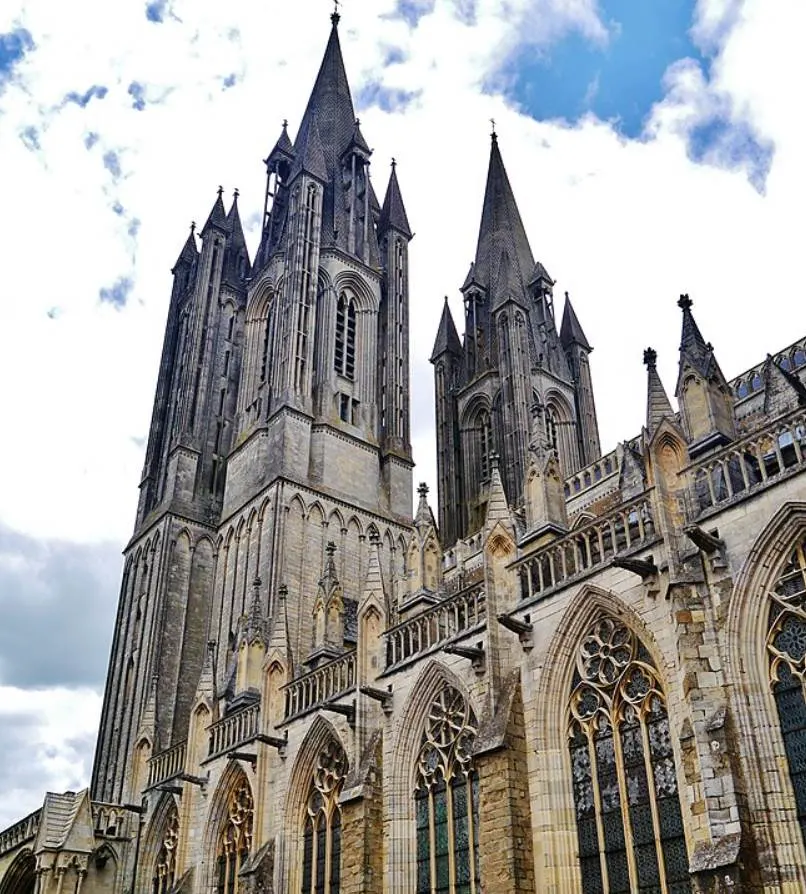
20. Salisbury Cathedral
Salisbury Cathedral is a church in the city with the same name in South West England. Most of the structure was completed in the 13th century and the spire was finished in 1320.
It’s one of the few Gothic Cathedrals in England that was completely constructed in the Early Engish Gothic architectural style. It features the tallest sire of all churches in England since 1561 at 123 meters (404 feet).

